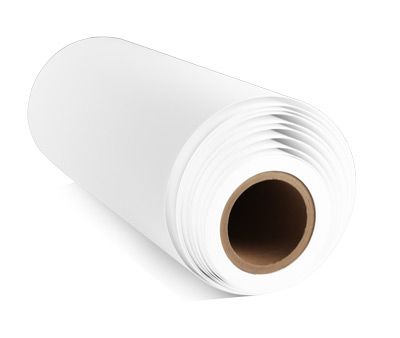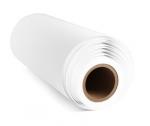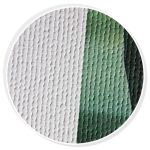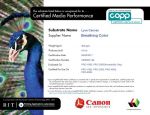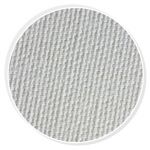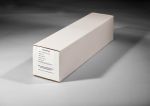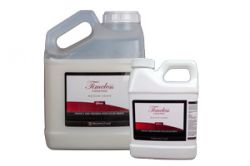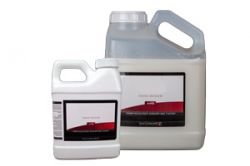Lyve Inkjet Canvas
Unsurpassed print quality
OBA free yet bright white
High resolution. Incredible detail.
Matte fine art surface
Archival Certificate - free to download
Works perfectly with Timeless varnish
Description
PREMIUM MATTE FINE ART INKJET CANVAS ROLLS. 390GSM CONSISTENT POLY-COTTON BLEND. ARCHIVAL CERTIFIED.
Released under the bold mantra 'Go Live with Lyve', the award-winning Lyve™ giclee canvas has taken the printmaking industry by storm. With eye-popping colour gamut and Dmax, coupled with critical archival certification and the ability to apply a laminate hassle-free, it sets a new standard of excellence in fine art and photographic printmaking. Internally, Breathing Color refers to this masterful blend of artistry and engineering as 'the game changer' that will capture every nuance in your images. The Lyve™ Canvas is a 19 mil bright white, consistent poly-cotton blend matte canvas using an acid-free, OBA free, neutral pH coating.
Key Features
EYE POPPING COLOUR GAMUT & DMAX - If Chromata White Canvas impressed you, wait till you see Lyve. Lyve boasts a 15% measurable improvement in Dmax and colour gamut. 'Go Live with Lyve' and you'll be using the finest matte canvas on the market, but you don’t have to take our word for it - read the reviews we have posted from customers and industry influentials.
INCREDIBLE RESOLUTION - There is no doubt that Lyve took a leap forward in delivering image resolution. It will capture detail and nuance in your images that you won't have seen on another canvas. Many photographers attest that this is Lyve''s most desirable improvement.
CANVAS AND VARNISH MADE FOR EACH OTHER (LITERALLY) - There is no superior combination than Lyve canvas and Timeless laminate for giclee fine art canvas prints - both are proprietary products that were designed for one another. Never risk using a varnish again that wasn't designed specifically for your canvas.
OBA FREE BUT STILL HIGH WHITE - Called 'Chromata White', this breakthrough technology has set Breathing Color apart for years. Normally, OBA-Free products have a yellowish surface. Our 'Chromata White' technology, which we released in 2005, forever changed this by delivering OBA-Free with the desired brighter white surface. This answered the needs of our customers to maximise the longevity of their prints while maintaining the most popular and desired look.
'Chromata White' gives the end-user the most stable platform on which to print photographs and fine art giclees without the metamerism issues or colour shift issues inherent on other canvases. Optical Brighteners compromise the attainment of true colour, they complicate profiling accuracy, and they inevitably deteriorate and yellow over time. You can read more about OBA's and their long-term effects on inkjet prints
ARCHIVAL CERTIFIED - Lyve is archival certified for 100+ years. Download and utilise Lyve's Archival Certificate to differentiate your business and show your customers how much you care about quality and the long term permanence of their prints.
NO CRACKING OR TEARING WHEN STRETCHING - When varnished with Timeless Gloss, Satin, or Matte, Lyve will not crack or tear when stretched.
HIGHLY WATER-RESISTANT - All Breathing Color inkjet canvas grades are water resistant. Lyve will accept a water based liquid laminate or water based varnish and is compatible with both Timeless and the original Glamour II canvas varnish which provide necessary protection against scratches, scuffs, airborne pollutants and moisture.
PRINT PERMANENCE TESTING & ARCHIVABILITY STANDARDS
ARCHIVAL CERTIFIED - Lyve is archival certified for 100+ years and has passed the blue wool test as set out by the Fine Art Trade Guild. Download and utilise Lyve's Archival Certificate to differentiate your business and show your customers how much you care about quality and the long term permanence of their prints.
Get A Trial Roll
If you are new to Breathing Color and would like to test this product, we highly recommend that you take advantage of the inexpensive Trial rolls offered which provide enough product for sufficiently running tests and creating samples. Trial rolls are limited to one per customer per product.
Resources
Listen In
WHICH MATTE CANVAS IS BEST FOR ME?
We sat down with Breathing Color President Nick Friend and Vice President Adam Hill to discuss Breathing Color's matte canvas options - Lyve, Chromata White, and 800M - in order to help users select the best option for their business. LISTEN HERE
Related Videos
MEET LYVE
For more helpful videos on printing techniques, color management and more please visit Breathing Colors BLOG
I have issues with canvas sagging after being stretched
- Canvas sags more in the direction of the weave, typically horizontal
- Sagging can happen from under or over tightening
- Environment plays a huge part - high constant humidity will relax canvas
- For dry environments, spritzing the back of a sagging canvas with hot, distilled water can help re-tighten.
- Start stapling on longest dimension & staple clean line. Move to the opposite side, not around the edge of the frame.
- Add cross bars and corner keys after full framing.
- Putting a bead of archival glue on the bars as you set the edge helps hold tension and keep it all even and flat.
- Frame in a high humid environment then move to a drier environment.
- More information can be found in this article.
How should I handle Breathing Color media? What about storage?
To prevent the transfer of oils and dirt from your hands to the inkjet receptive coating of the media, white cotton gloves should be worn when handling the media. When not using the media, you should store it in its original packaging, exactly how it was shipped to you. Read more about our recommended handling and storage best practices on Breathing Colors blog, The Art of Printmaking.
How long should I let my prints dry before coating/framing?
When printing on canvas or fine art paper, it is critical that the prints be allowed to dry and outgass fully before they are coated or framed behind glass. Typically this takes 24 hours. Finishing these prints prematurely can cause a whole host of problems from splotchy glass when framing, to pin holes and bubbles while coating in preparation for stretching. Read more about dry time and outgassing on Breathing Colors blog.
My canvas prints "shrink" length-wise when they come out of my printer. How can I fix this?
Length-wise (or vertical) canvas shrinkage is typically caused by tension created on the printer while printing with canvas rolls. This shrinkage is normally quite consistent and can be compensated for through Photoshop. Read more about how to compensate for canvas shrinkage here on our blog, The Art of Printmaking.
I am seeing "banding" on my prints. What is causing this?
There are a few different things that can cause banding. Most commonly, you will see banding occur when there is a clogged nozzle or something else hardware related. Please follow the steps below to help identify the issue:
Ensure that your printer can handle the thickness of the media you are attempting to print on. In your printer's user manual, or by calling the manufacture, you can find the maximum weight that your printer will accept; make sure that the media doesn't exceed this maximum specification.
See Breathing Colors blog about doing a nozzle check and other maintainance on your printer.
If the nozzle check results look fine, proceed to check your platen gap settings and making sure other print settings are correct.
What is the difference between Chromata White and Lyve Canvas?
Lyve Canvas can be considered the "next generation" of our world-renowned Chromata White Canvas. In 2005 Chromata White was released as a groundbreaking matte canvas exhibiting unrivaled print quality, archival rating, and consistency, all of which still hold true today. Over the past several years the Breathing Color team of scientists have been diligently working to develop a new IRC (Inkjet Receptive Coating) that would represent the next evolutionary step forward in print quality and archival technologies of inkjet canvas.
While Chromata White Canvas is still considered a prominent industry-leader, Lyve Canvas exhibits a noticabley wider color gamut, greater DMax value, and sharper detail, making it a clear choice for the discerning printmaker. Lyve Canvas is the most recent example of our ongoing commitment to positively contribute the world of photography and fine art, through excellence in print quality and print permanence.
Testing & Evaluation - Trial Rolls
For testing and evaluation, we offer short trial rolls of all of our inkjet canvas, inkjet fine art paper, inkjet decor paper, and inkjet signage products that are sold at cost. Typically, trial rolls are 17"x10 feet. The purpose for this is to allow our customers to conduct a comprehensive evaluation of our products, cost effectively. There are several steps that should be taken when testing any new digital substrate for your printing business.
1. The substrate should be tested with several different images to be sure the product performs well with everything image-type that you intend to use it for (try a portrait photograph, a vibrant fine art print, a black & white piece, etc.). Make sure you are selecting images that are fairly different from one another with respect to color and tonal gradation for a thorough evaluation.
2. Show a few of your most important customers a print of their own work on the media you are testing. Maybe provide an example of your current media to illustrate a comparison. Explain the physical and archival attributes of the new substrate and the reasons that you are considering a switch. It is the printmakers job to educate their artists about all things printing-related, especially media.
3. Trial rolls provide enough media to create custom profiles, for those who are capable. Breathing Color also offers a free custom profile service, which requires approximately two square feet of printed media.
4. It is important to have enough media to leave a margin for error in case the first attempt had not been printed correctly (print settings, profile, platen gap, etc.).
5. For inkjet canvas: coating, stretching, and hand embellishment should also be tested.
Matte Black vs. Photo Black
Matte Black (MK) ink is designed for Matte Papers and Photo Black (PK) ink is designed for glossy papers. The difference between these two black ink types is simple; MK prints a very dull, flat black, while PK prints a highly glossy, shiny black. Think in terms of flat black spray paint vs. glossy black spray paint. Generally speaking, the very best results and the deepest blacks for that particular substrate will be achieved by using PK with glossy substrates and MK with matte substrates. Your Epson printer manual will also provide you with a decent explanation of when they recommend using matte black ink or photo black ink.
That being said, wide-format Epson printers present a problem for those who wish to maximize their output potential by offering both matte and glossy papers as available substrate options. This is because Epson machines are built to run either the PK or the MK, rather than allowing the printmaker to switch blacks from print to print. As a result of this quandary, those who own wide-format Epson printers must make an important decision What type of prints do I want to be best at? In other words, if 80% of your printmaking business is fine art on matte papers and matte canvases, naturally you will want to run your Epson with MK, which will render the highest black density on your primary substrate line. Likewise, if you are a photo lab for example and mostly reproduce photography on glossy papers, the PK is the more intelligent choice as it will render the glossiest black, which is most desirable on glossy substrates (to avoid a gloss differential).
Traditionally, most all inkjet printable substrates, matte or glossy, will work with the PK ink. Though the maximum black density (DMAX) would be significantly less, the print is otherwise unaffected. This is not true of the MK ink. When most glossy or semi-glossy papers are introduced to the MK ink, the ink will run and bleed, rendering the print completely unusable.
How Do I Mount My Inkjet Canvas or Fine Art Paper With Glamour II Veneer?
We made a video that shows the process: Mounting Prints With Glamour II Giclee Varnish
What is the safest way to embellish my inkjet canvas prints?
It is always recommended to first seal your inkjet canvas prints with Glamour II or Timeless before attempting to hand embellish. You can also use Glamour II as a Texturizing Gel.
How do optical brightener additives (OBA) effect longevity of fine art prints?
Optical Brightener Additives (commonly referred to as OBA's) are widely used in paper coatings, textiles, and laundry detergents to increase the perceived "whiteness" of the treated products. OBA's work by absorbing light from the (invisible) ultra-violet end of the spectrum and emitting light in the (visible) blue/white range of the spectrum. This shift in the frequency of light energy, results in a whiter and brighter appearance of the treated product.
Many digital inkjet printmakers, who print using Epson 9800, Epson 7800, Epson 4800, and/or Canon imagePROGRAF iPF9000 prefer a bright white surface to print on, to the true surface color of their naturally-yellow substrate. As a result, paper manufacturers are adding OBAs to the digital inkjet receptive coating (IRC) used on their fine art papers and inkjet canvas'. The reflection of white light emanating from the OBAs will completely overwhelm the paper's natural color, creating a higher perceived whiteness, which artificially enhances the maximum color gamut and black density of the printed image. Popular rag papers that contain OBAs are the Hahnemuhle Photo Rag, Somerset Velvet, and Breathing Color Elegance. These papers are known for their bright white surface and excellent color gamut and black density.
While OBA's appear to be an effective solution for enhancing the whiteness and overall image quality of inkjet paper, this conclusion is slightly premature. The fact is, that OBA's can pose a serious threat to the integrity and longevity of a fine art print by accelerating metamerism and causing color shifts, and yellowing over time. Let us explore each of these issues in further detail.
What is metamerism? Harald Johnson defines metamerism as a normal phenomenon relating to how the human eye perceives color. It occurs when "two different color objects have the same color appearance to a normal human viewer under one light source (metameric match) but look different under another light source (metameric mismatch)." (*1) To a printmaker, this means that the painstakingly precise color information applied to each print will be compromised whenever that print is viewed under a different light source. Thus, one primary goal of any printmaker should be to avoid metamerism in order to validate the time spent on color management and to uphold the integrity of the reproduction. After all, what good is a reproduction if it does not closely match the original?
Now that we understand metamerism and why it should be avoided, how do OBAs fit into the picture? When OBAs are exposed to UV light, the treated paper appears brighter and whiter. When OBAs are not exposed to UV light (in the evening), the OBA's "lose activity", causing your eye to actually see the paper color without OBAs - which will look creamy or somewhat yellowed. This amount of "OBA activity loss" will vary constantly depending upon how much exposure the paper has to UV light. Picture the lighting conditions inside of an art gallery and how they will change depending upon the time of day. This will have a subsequent effect on the art itself, as it is exposed to various levels of UV light throughout the day. For example, your print could be displayed in a gallery near a window where direct or indirect daylight may be illuminating the print. In a case like this, where there is a high UV component, inkjet papers that contain OBA's will strongly fluoresce and will appear bright white. However, in the evening when the same print is displayed with low or non-existent UV component (or incandescent tungsten illumination), the OBAs will not fluoresce, making the paper appear yellow, therefore causing your eyes to see the image color differently.
How does this happen? Think about it. Your "bright white" paper is profiled to your printer so that the computer can translate color information accurately to the substrate. Anyone with experience creating color profiles will tell you that the "white point" of your substrate is an integral component of a profile's accuracy. If the whiteness of your paper changes, so must your profile. This is precisely how OBAs are constantly working against your color management. As the perception of whiteness of the paper is constantly changing, so do the perception of colors. Here's a good test. If you can find a paper offered in both bright-white and natural-white, try using the natural-white paper printing profile on the bright-white paper. You will be surprised by how different your results will be.
Next, take both papers and observe the whiteness in broad daylight. The paper with optical brighteners should look extremely bright white, while the paper without optical brighteners will look creamy. Then, take the two papers indoors where they are exposed to no sunlight and observe the whiteness. You probably will not be able to tell a difference between the two. At the very least, you will notice that the paper with OBAs no longer looks so white and bright. Many times, the OBA-Free paper will appear whiter. Nevertheless, the important point is that your OBA-Free paper has remained consistent under both lighting conditions, while the paper with OBAs has been inconsistent. This inconsistency directly correlates to the inconsistency that your image color will have under different lighting conditions. Still, overall white point is only one of the risks associated with using substrates that contain OBAs.
Another problem with OBAs is that they have been known to decompose over time and can cause yellow stains to appear on your prints. It is possible to avoid this issue with UV inhibiting products and overcoats that are designed to reduce the UV activation of OBAs, but their effectiveness in this regard has yet to be proven. Therefore, regardless of the post-print protective coating that can be applied, the fact remains that any fine art print made on a paper manufactured with OBAs is a print at risk. To quote Henry Wilhelm from the Wilhelm Research Institute, "When long-term image permanence is an important consideration - or may eventually become an important consideration - fluorescent brighteners should be avoided".
This associated risk is precisely why OBA-Free papers have rapidly gained popularity in recent years despite their "Natural White" color, which could be considered creamy or even yellow. Of course some printmakers have chosen to use OBA-Free papers because they specifically like the warm tone of the paper, but the majority of the market is avoiding papers manufactured with OBAs because they (1) enhance metamerism and (2) they are a potential risk to the longevity and integrity of a substrate. A few examples of popular OBA-free papers are Epson's Ultrasmooth Fine Art Paper, and Breathing Color's Sterling Rag 210.
Printmakers who use OBA-Free papers simply eliminate the entire element of what can be called "OBA-associated Risk" from their business. These printmakers know that metamerism is a problem that should be minimized whenever possible - certainly never enhanced. Furthermore, OBA's have degradation potential and up to this point there is no guarantee that anything will last. Nevertheless, if an artist or photographer specifically requests that their artwork be printed on a paper manufactured with OBA's, a disclaimer should be issued, clearly explaining the facts and associated risks. Ultimately the customer should be left with the decision of how they want their art to look.
In an industry so obsessively tied to color accuracy and long-term print stability, it is a wonder why OBA-Free papers are not more commonly used than papers manufactured with OBA's. Art sells because of how it looks and in this business there is no room for error. Therefore, anyone who is involved in this relatively infant industry of selling printed art has genuine incentive to make color integrity a top priority. As further research is performed on the subject of OBA's, this industry will become more educated which will most likely cause a shift towards the widespread use of OBA-Free papers.
It is for this reason that Breathing Color has been conducting a great deal of research and development in quality paper manufacturing, which has resulted in the latest technological breakthrough "Chromata White". The Chromata White technology allows Breathing Color to create a highly stable white base paper/canvas without the use of harmful OBA's or any other fluorescent brightening additives. Color shifting is reduced by stabilizing the whiteness of the base substrate with a special anti-oxidation technology that even further protects printed images. Furthermore, metamerism is minimized by quenching the ultraviolet excitation wavelengths resulting in a more stable illumination of an image under different spectral power distributions.
By using Chromata White inkjet papers and canvas', printmakers now have the opportunity to get the best of both worlds. They eliminate all OBA-associated risk, and they have bright white surfaces to make beautiful prints that uphold the highest standards of color integrity that are possible today.
When stacking coated prints what kind of interleaving paper should I use?
The best way to protect coated prints when stacking or sending out to ship would be to wrap the print in Glassine paper. You do not want to separate your prints with paper that contains acid in it. If acid comes into contact with your print it may cause the print to turn yellow. You can find many different types of Glassine papers online, or at your nearest art supply store. The main thing to keep in mind when looking for this type of paper is to make sure the paper has a neutral pH level, or acid free.

